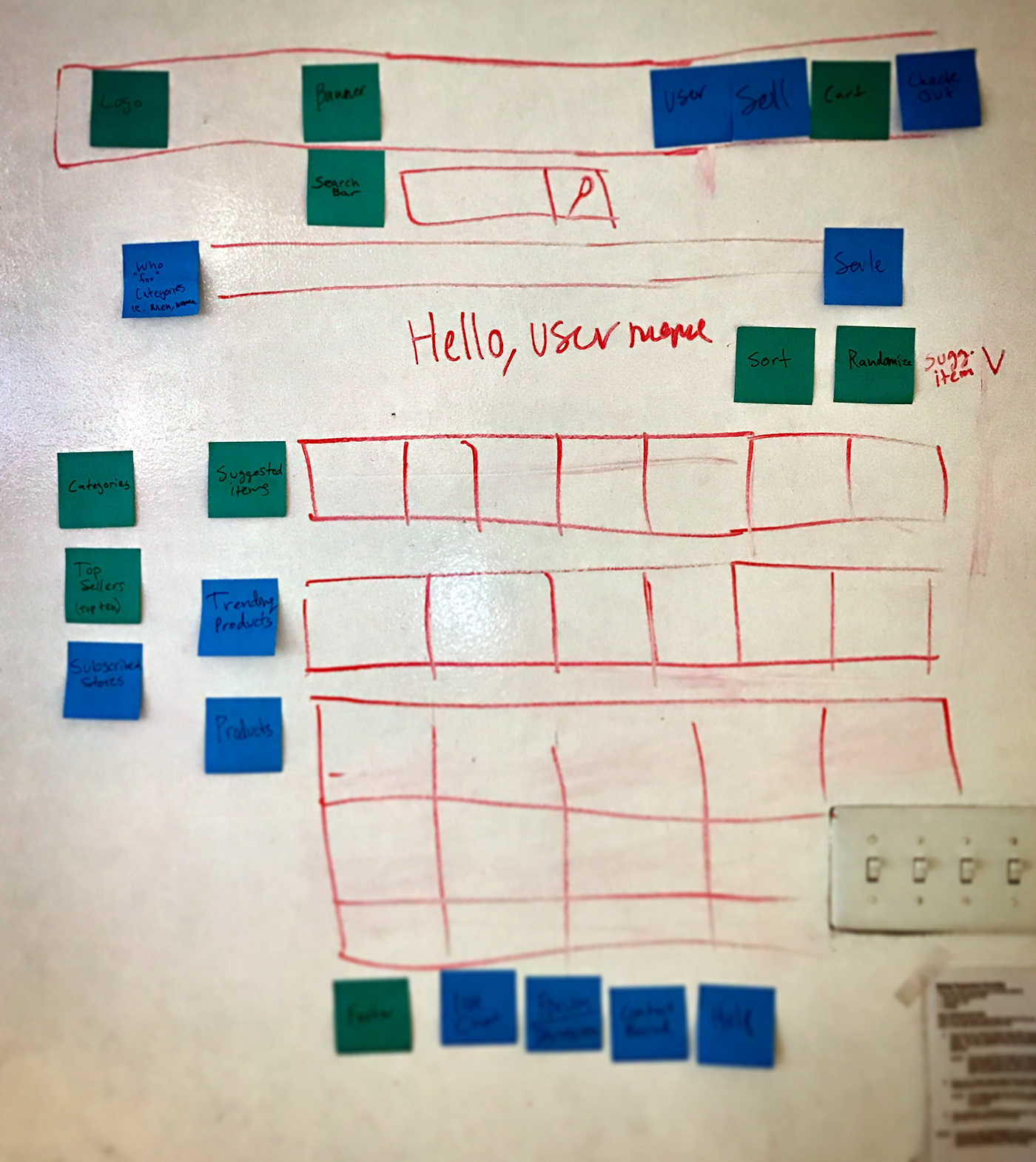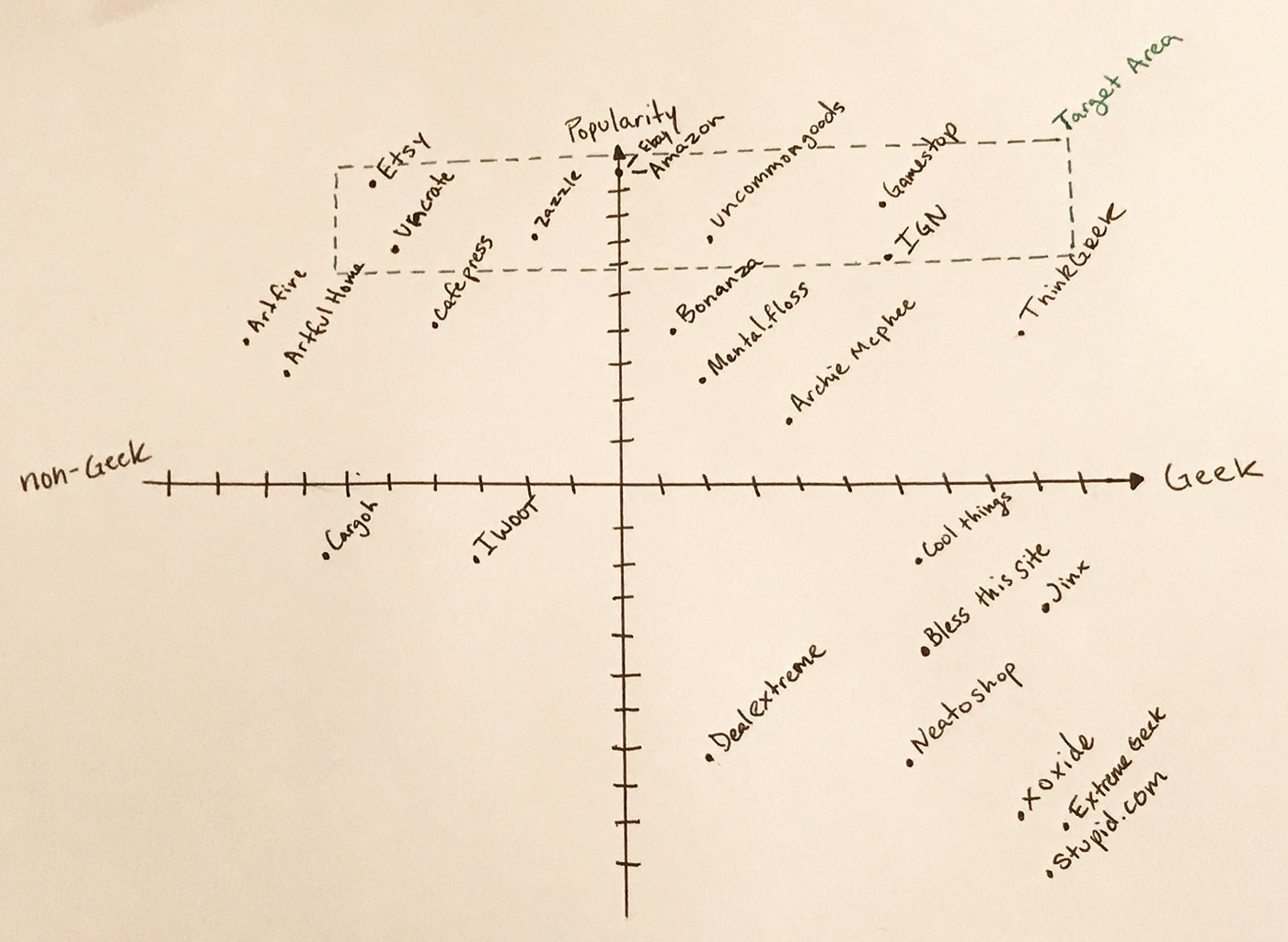







Background
The task I was given with this project was to create a marketplace for ThinkGeek users to buy and sell their own products.
The Problem
The problem I was set out to solve was to expand ThinkGeek's business by creating a platform for users to engage with each other through a means of transactional interaction.
Research
Some key research techniques used in the development of this project were: user identification, competitive & business analysis as well as user interviewing.
I created a number of topic maps combined with psychoanalytical research to help me better understand what it means to be a "Geek" observing common traits and behaviors especially in regards to their interaction with e-commerce sites.
Once I was able to get a better understanding of my user I set out to find people who fit the description of my user. I was able to conduct my user interviews with those people to better understand their tendencies when interacting with this type of product as well as their needs.
Through extensive online research I was able to accumulate a large list of potential competitors, inputing them on a t-table diagram positioned in areas based on target demographics (non-geeks to geeks) and popularity (based on social networking statistics). I identified my target competition zone (most popular + companies who had a similar target demographic) and was able to narrow down my competitors.
With my narrowed down list I began page blocking, screen shotting various website pages of my competitors and placing labeled blocks over different elements within the site to identify what my competitors found to be most important based on hierarchy and site real-estate.
Using the information I gathered through page blocking I created a feature analysis chart which helped me determine what features and services my competitors had or didn't have to recognize what features and services I may need to incorporate in my site to provide be best experience for my users
The Solution
The ThinkGeek Community Market solves this problem by bridging the gap between buyers and sellers, allowing sellers to engage with their fellow "geeks" and target audience.
Concept Development
When the data from my research was gathered I then began the ideation phase of my project. This consisted of using the gathered data to inform the decisions I made in order to design my community market. I started by storyboarding situations that my users would potentially experience and creating user flows based on those various interactions within my site. The technique I found that helped me the most with designing my site was a variation on the card sorting technique, basically I would write out all of the features I had acquired through my feature analysis on sticky notes and place them on the wall to emulate my website, this allowed me to quickly swap out features and arrange them in different locations of my "site" to rapidly come up with potential designs that would work for my site. Using this technique I once again sought out people who fit my target demographic and let them arrange the sticky notes in a way that they thought best represented a site they were comfortable, allowing me to record my findings to better inform my sketches. When I completed my sketches I then began wire framing my sketches and creating wire-flows to determine the most logical design for my user interactions. I then took the wireframes that were close to finalized and created low fidelity prototypes that I was able to use for my usability testing. The usability test pointed out a number of issues that I didn't previously identify myself, allowing me to reiterate once again to the final prototype I have now.
Feedback
The feedback I received from my potential users in regards to my wireframes was essential for reiterating my designs. When I started out designing I got to a point of trying to include "too many" features, WhenI showed my wireframes to those potential users I was informed that there were features that i included within my design that would potentially create confusion for the user, for example a "watch" feature that allowed users to "watch" a product and keep track of the status of that product, the issue with this was that I also had an "add to wish list" feature right next to the "watch" feature which I was told was a feature that would be use much more often, so I got rid of the "watch" feature and simply incorporated a status indicator allowing the user to track the status of the products within their wish lists.
Why it Matters
The ThinkGeek Community Market is the one stop site for customers to find unique and authentic products that they love straight from sellers who are just like them.
Next Step
The next step I'd like to take with this project would be to create a high fidelity semi functional prototype that I could use within my portfolio.
Prototype
https://projects.invisionapp.com/share/5E9TBPXB2#/screens



